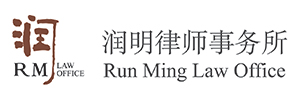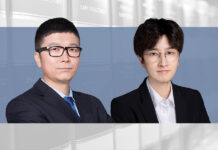In recent years, Chinese companies have often exerted considerable pressure on foreign investment enterprises in intellectual property struggles. As a result, foreign investment enterprises should attach greater importance to Chinese utility model patents, and accordingly reevaluate their related intellectual property enforcement strategies.
Sino-foreign IP cases involving utility models have included Zhengtai v Schneider; Zhejiang Shuaikang Electric v Electrolux Home Appliances in 2007 involving a utility model patent for a gas stove damper regulation device; Zhejiang Jifa Electronics v Makita (China) involving a utility model patent for a mitre saw cross rod structure; a series of IP disputes beginning in 2008 between Shanghai Haier Integrated Circuit and Microchip Technology Inc, involving several Haier utility model patents; and patent disputes in 2010 between Aigo on the one hand and China HP and Toshiba (China) on the other involving Aigo’s USB Plus data transmission technology invention and several utility model patents.
Changes in strategy

Partner
Run Ming Law Office
As the grant of patents for utility models does not require a substantive examination, requirements in respect of creativity, and the time and expense needed to make an application, are lower than those for invention patents. Consequently, as a matter of corporate IP strategy, Chinese companies have often preferred to apply for utility model patents.
In contrast, as the majority of patent applications in China by foreign investment enterprises derive from prior foreign invention patent applications, when the applications for related patents are made in China, they mostly take the form of invention patents.
In recent years, however, the situation has changed somewhat. Chinese companies have started to apply for more invention patents, an foreign investment enterprises have begun to reexamine the usefulness of utility model patents. On the one hand, the PRC Patent Law, as amended in 2008 and implemented in 2009, and the PRC Patent Law Implementing Rules, amended this year, have improved the evaluation reporting system for utility model patents. Although utility models and designs still do not undergo substantive examinations before the granting of a patent, the quality of utility model patents may be inspected again either through a follow-up invalidation procedure or the patent evaluation report system. On the other hand, foreign investment enterprises are strengthening their PRC-based research and development, inventing and creating new products and technologies which, after initial release on the PRC market, are then promoted globally when appropriate. Such reverse innovation may also result in changes in the PRC intellectual property strategies of foreign-invested enterprises.
Utility models

Intellectual property lawyer
GE Healthcare (China)
We believe that foreign investment enterprises should reassess the role of utility model patents in their China IP strategies in the following respects:
Firstly, with respect to products or technologies with short lifecycles (such as electronics and electrical goods), where a patent needs to be gained quickly (e.g. when facing rapidly increasing competition from domestic companies), a foreign company may consider applying for utility model patents so as to shorten the time between the application and the grant.
Secondly, as invention or creation with respect to medium and low-end products and related technologies is relatively simple and not especially creative, and since there may be a large volume of prior art, it can be impractical to apply for an invention patent. However, as the sales volume of medium and low-end products is greater, they too need IP protection. In such circumstances, utility model patents can better enhance the IP protection of medium- and low-end products and technologies.
Thirdly, for particularly important products and technologies, consideration can be given to applying for both invention/creation patents and utility model patents, so as achieve earlier and continuous protection. Article 9 of the Patent Law, as amended in 2008, has improved the provision for applying for both an invention patent and a utility model patent for the same invention or creation, “Only one patent may be granted for an invention/creation. However, if an applicant, on the same date, files for both a utility model patent and an invention patent for the same invention/creation and if, before the termination of the utility model patent that was obtained first, such applicant issues a declaration relinquishing the patent to such utility model, it/he may be granted an invention patent therefor.” To a certain extent, proceeding in this fashion actually brings forward the time for working on the invention patent. However, it needs to be pointed out that for international patent applications entering the PRC under the Patent Cooperation Treaty, only one, either invention or utility model, may be selected at the time of entry into the PRC.
However, an applicant should, with respect to any one invention/creation, avoid allowing its foreign patent application to be affected by a PRC utility model patent. As PRC utility model patents are granted quickly (usually within one year), such a PRC utility model patent will become “prior art” with respect to that applicant’s related undisclosed foreign patent application and could affect the novelty and creativity of such foreign patent application. Accordingly, where market prospects and strategy are unclear or where a conservative stance should be taken on the time of disclosure, and follow-up judgments on the product and technology need to be made, application for a utility model patent is not recommended.
A foreign investment enterprise can design a PRC intellectual property strategy using the three available types of patents – invention patents, utility model patents and design patents – so that each reinforces the other. At limited cost, a multidimensional and more effective patent setup can thereby be established. For core technologies, invention patents are crucial, and consideration can even be given to “double patenting”. For peripheral technologies, consideration needs to be given to, firstly, whether patents are needed, and secondly, whether an application for utility model patents would be the most appropriate course of action.
Li Min is a partner at Run Ming Law Office
Dong Ying is an intellectual property lawyer at GE Healthcare (China)

Suite 1806, NCI Tower,
12A Jianguomenwai Avenue,
Chaoyang District, Beijing, China
Postal code: 100022
Tel: +8610 65693511
Fax: +8610 65693512/13
www.runminglaw.com
E-mail:limin@runminglaw.com





















